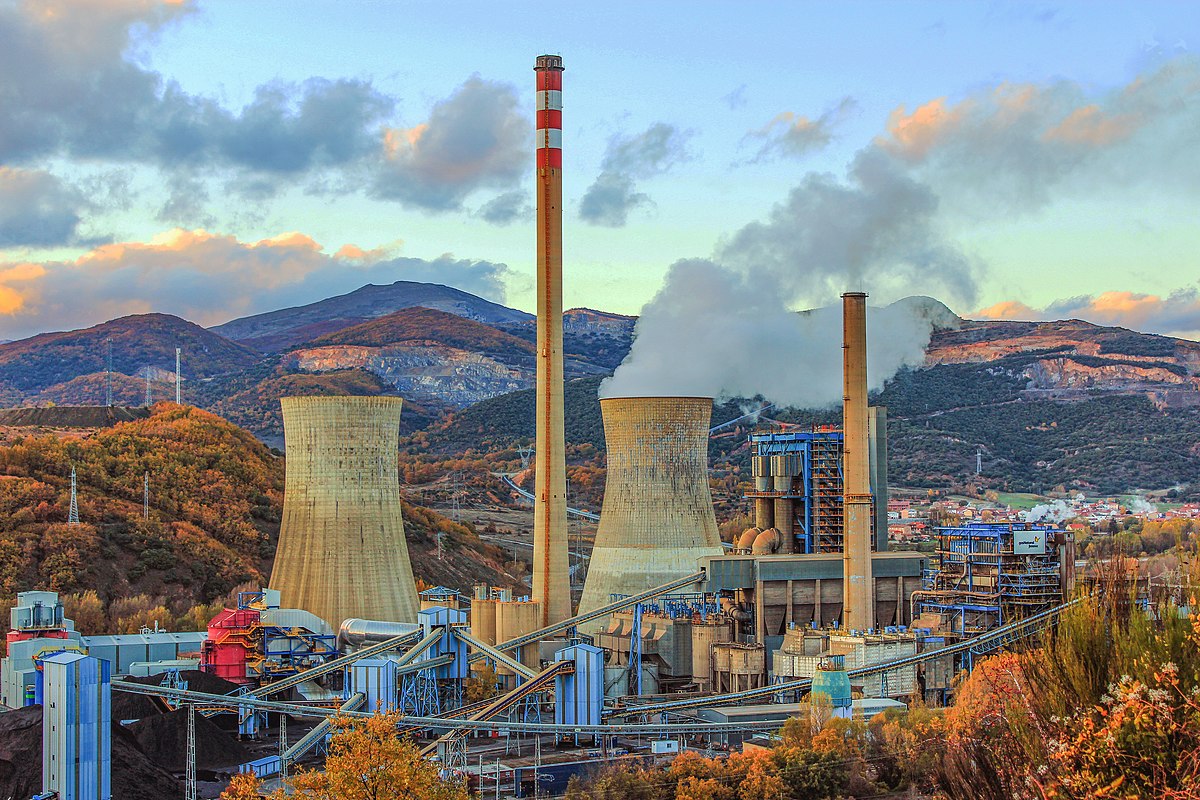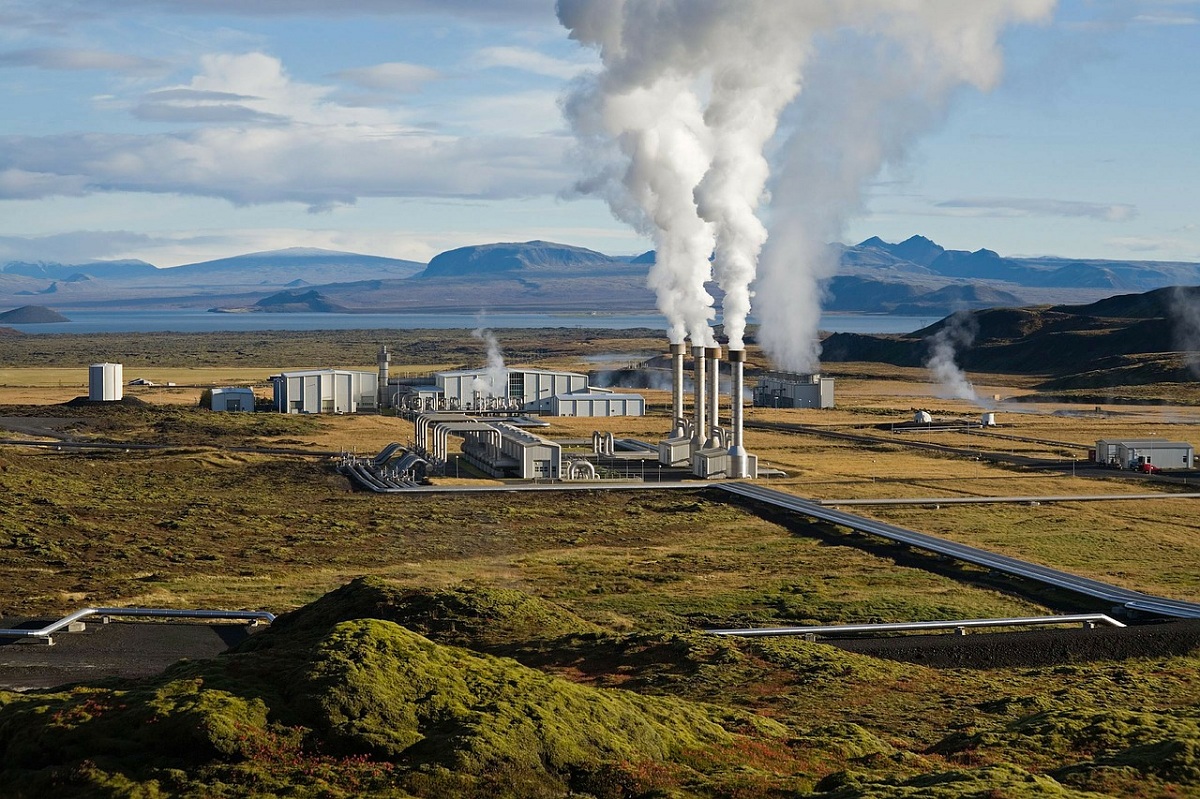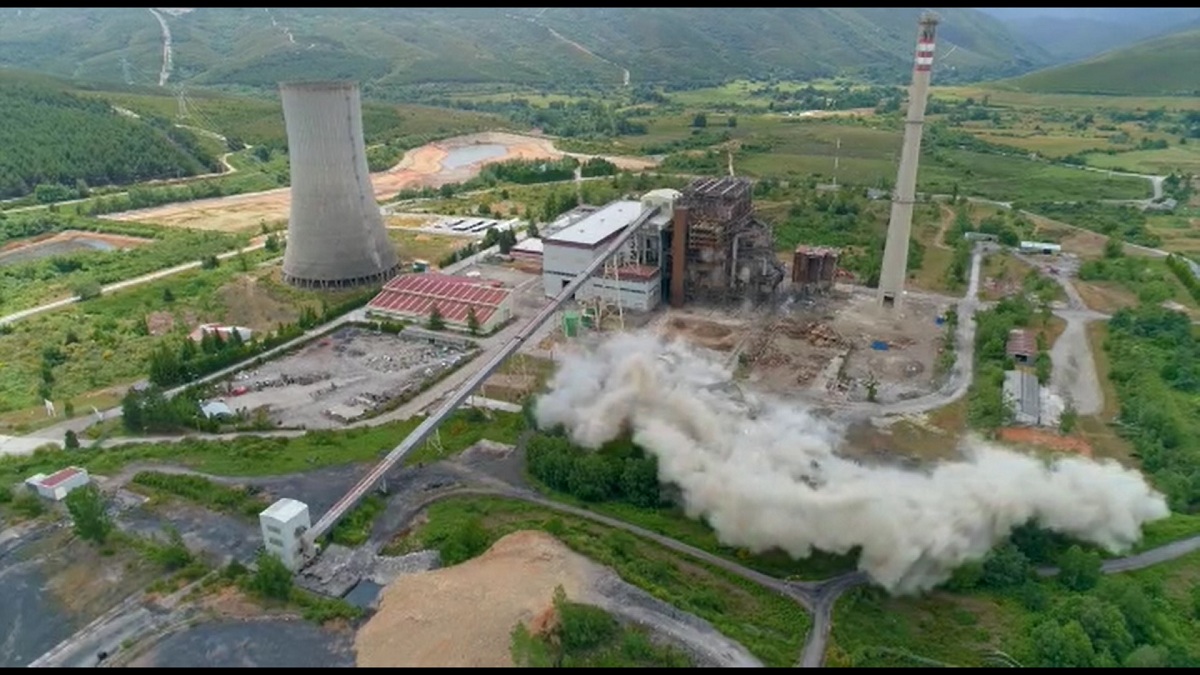
There are many ways to produce energy depending on the type of fuel we use and the place or method used for it. Conventional thermal power plants are also called thermoelectric plants and use fossil fuels to generate electricity. Many people don't know well what is a thermal power plant.
Therefore, we are going to dedicate this article to tell you what a thermal power plant is, what its characteristics are and how they generate electrical energy.
What is a thermal power plant

Conventional thermal power plants, also known as conventional thermoelectric plants, use fossil fuels (natural gas, coal or fuel oil) to generate electricity through a thermal water vapor cycle. The term "conventional" is used to distinguish them from other thermal power plants, such as combined cycle or nuclear power plants. Traditional thermal power plants are made up of multiple elements that can convert fossil fuels into electricity. Its main components are:
- Boiler: Space that converts water into steam through fuel combustion. In this process, chemical energy is converted into thermal energy.
- Coils: pipe through which water circulates and turns into steam. Between them, the heat exchange occurs between the flue gas and the water.
- Steam turbine: Machine that collects water vapor, due to a complex system of pressure and temperature, the axis that passes through it moves. This type of turbine usually has several bodies, high pressure, medium pressure and low pressure to make the most of the water vapor.
- Generator: Machine that collects the mechanical energy generated through the shaft of a turbine and converts it into electrical energy through electromagnetic induction. The power plant converts the mechanical energy of the shaft into three-phase alternating current. The generator is connected to shafts that pass through different bodies.
Operation of a thermal power plant

In a traditional thermal power plant, fuel is burned in a boiler to produce thermal energy to heat water, which is converted into steam at very high pressure. This steam then turns a large turbine, which converts thermal energy into mechanical energy, which It is then converted to electrical energy in an alternator. The electricity passes through a transformer that increases its voltage and allows it to be transmitted, thus reducing the losses due to the Joule effect. The steam that leaves the turbine is sent to the condenser, where it is converted into water and returned to the boiler to start a new cycle of steam production.
Regardless of the fuel you use, the operation of a traditional thermal power plant is the same. However, there are differences between fuel pretreatment and boiler burner design.
Therefore, if the power plant runs on coal, the fuel must be crushed beforehand. In the oil plant the fuel is heated, while in the natural gas plant the fuel arrives directly through the pipeline, so there is no need for pre-storage. In the case of a mixing device, a corresponding treatment is applied to each fuel.
Environmental impacts

Traditional thermal power plants affect the environment in two main ways: discharge of waste into the atmosphere and through heat transfer. In the first case, the burning of fossil fuels will produce particles that eventually enter the atmosphere, which can damage the Earth's environment. For this reason, these types of plants have tall chimneys that can disperse these particles and locally reduce their negative impact on the air. In addition, traditional thermal power plants also have particle filters, which can trap most of them and prevent them from running outside.
In the case of heat transfer, open cycle power plants can cause rivers and oceans to heat up. Fortunately, this effect can be resolved by using a refrigeration system to cool the water to a temperature suitable for the environment.
Thermal power plants produce a variety of very dangerous physical and chemical pollutants, which have a negative impact on human health. Adverse effects on the human body are manifested in the short, medium and long term, enhancing and unleashing the effects of pre-existing pollutants. The negative impact on human health can include a wide range of diseases, from mild to serious and life-threatening conditions. These are the main pollutants:
- Physical contaminants: The acoustic pollutants caused by the noise generated by the operations can cause changes in the human body, which are secondary to the interruption of the sleep-wake biological rhythm. Electromagnetic pollutants, that is, electromagnetic radiation generated by obtaining and distributing electricity, mainly produce changes in the nervous and cardiovascular systems.
- Chemical contaminants: CO2, CO, SO2, particles, tropospheric ozone, increase the number of respiratory and cardiovascular diseases, and reduce our immune defense capabilities, dangerous chemicals (from arsenic, cadmium, chromium, cobalt, lead, manganese, mercury, nickel, phosphorus, benzene , formaldehyde, naphthalene, toluene and pyrene. Although present in trace amounts, they are very dangerous substances because they can cause serious acute and chronic diseases in exposed persons. Reproductive disorders and increased risk of cancer) and radioactive substances
Steam power plant
Steam power plants are characterized by the use of water or another liquid, which is in two different stages in the work cycle, generally in the form of steam and liquid. In recent years, supercritical technology has also become popular, which does not lead to the so-called phase shift, which was the characteristic of these installations in the past.
These thermal power plants can be divided into several parts: power lines, steam generators, steam turbines and condensers. Although the definition of a thermal power plant is very strict, different types of thermal cycles can be observed that meet these requirementss, especially the most common ones are the Rankine cycle and the Hirn cycle.
Before entering the boiler, the feed water goes through a preheating and compression stage. In fact, when entering the boiler, there are several heat accumulators, that is, heat exchangers, in which the expanded steam partially or fully preheats the working fluid. This allows higher temperatures to enter the steam generator, thus increasing the efficiency of the plant.
I hope that with this information you can learn more about what a thermal power plant is and its characteristics.